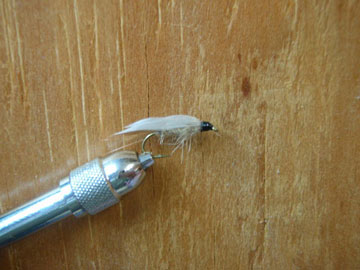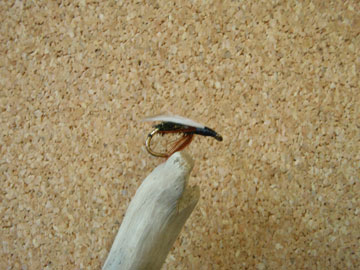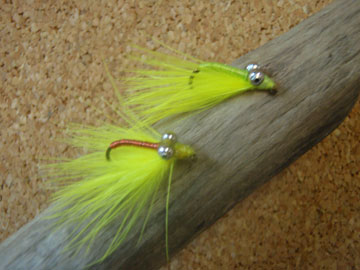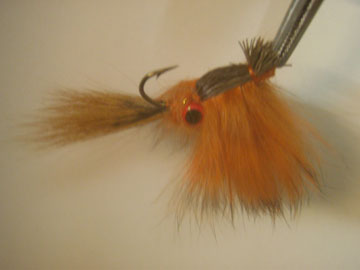FOTM Mar 2012
HACKLESTACKER MIDGE
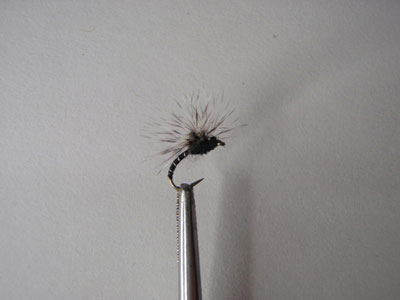
By Andrew Puls - Fly Tier magazine
Midge sippers are usually taking emergers which are imitated perfectly by the hacklestacker midge’s curved shank hook piercing the water’s surface. The hackle ball lets the body ride below the surface and is still relatively easy to see. Additionally trout can often be tricked into eating a hacklestacker midge that is considerably larger than the hatching insects; this is a huge benefit when the real bugs are an impossibly small size 26 or 24.Try tying one using golden pheasant for a tail and turkey biot’s for the abdomen also peacock superfine for the thorax the hook and hackle are the same – this one is called a biot hacklestacker.
HOOK Mustad = C49S Tiemco = #2487 or equivalent in sizes 20 to 16.
THREAD- black 8/0 (70 denier).
ABDOMEN- Black tying thread 8/0.
RIB – Fine silver wire.
HACKLE POST- 4X monofilament tippet. (doubled to form a loop).
HACKLE- Grizzly roster neck.
THORAX – Black dry fly dubbing. (I used super fine).
How to Tie
- Debarb hook- mount in vise. Start thread at front of hook shank one eyelet from eye.
- Tie in wire and using your thread tie it in halfway into the hook bend keeping the wire on the bottom of the hook and nice close wraps of thread (no gaps).
- Wrap thread forward to about halfway on the hook shank then spiral wrap the wire forward to the halfway mark also and tie off the wire and get rid of the tag end.
- To make the hackle stack cut a hunk of 4x tippet material about 6 or 7 inches long (16 to 18cm) double it over (tip to tip) to make a loop and tie it in about 2 eyelets from the eye then on top of the shank with your thread wrap it in good and tight to about the halfway point on the hook shank- clip off the tag end of the tippet.
- Grab a grizzly feather with the barbs about the size of the hook’s gap or one and a half the gap, it’s your choice. Strip the fibers off the butt end leaving the shaft bare about 1/4inch then tie in with the butt facing the eyelet.
- Using one of your fingers, put it in the loop and hold it up tight then using both fingers and thumbs from both hands wrap the hackle up the loop then down. Tie off hackle- you should have enough wraps to push them down on the loop shank then pull the hackle fibers backward to get them all facing toward the hook bend- measure if you have enough by pulling the loop forward to just in front of the eyelet. If there’s enough go ahead and dub in the thorax with the superfine then bring the loop over the thorax and tie in behind the eyelet. (Don’t crowd the head). Clip off the loop tag end, build a small head, whip-finish and you’re done.
**Sounds time consuming but it’s not. Tie up about two or three then it’s a very easy tie. Go tie up about three dozen in about an hour but save your best for the next meeting.

